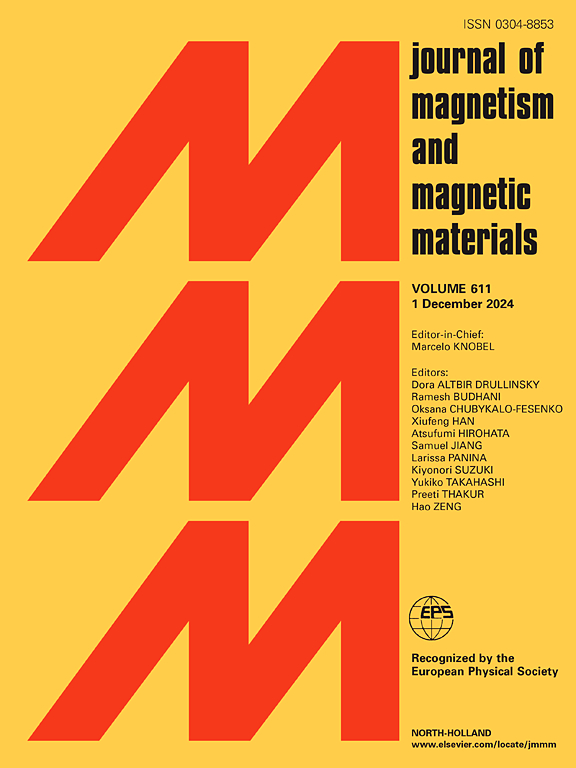Enhancement of spin valve GMR sensor’s sensitivity with [Ta/NiFe]n on-chip magnetic flux concentrator
IF 2.5
3区 材料科学
Q3 MATERIALS SCIENCE, MULTIDISCIPLINARY
引用次数: 0
Abstract
This study uses an integrated on-chip magnetic flux concentrator to explore the sensitivity enhancement of synthetic antiferromagnetic spin Valve (SV-SAF) sensors. Theoretical simulation on MFC indicates that a high magnetic gain factor up to 50 can be achieved with a lower air gap of and thicker, high permeability MFC material. In this report, a laminated film of [Ta/NiFe] of thickness was sputter deposited to achieve high permeability and low coercivity films. The magnetic gain factor was estimated by measuring the properties of the transfer curve of a single GMR-SV resistor embedded in the air gap. The results show that the magnetic gain of 25 and 46 were achieved by using 40 and air gap respectively. Further studies on Wheatstone bridge configuration reveal that the sensitivity of the spin valve can be improved to 10.7 mV/V/G in an operating field range of 0.5 G. These sensors have potential applications in low-field detection for healthcare applications.
求助全文
约1分钟内获得全文
求助全文
来源期刊

Journal of Magnetism and Magnetic Materials
物理-材料科学:综合
CiteScore
5.30
自引率
11.10%
发文量
1149
审稿时长
59 days
期刊介绍:
The Journal of Magnetism and Magnetic Materials provides an important forum for the disclosure and discussion of original contributions covering the whole spectrum of topics, from basic magnetism to the technology and applications of magnetic materials. The journal encourages greater interaction between the basic and applied sub-disciplines of magnetism with comprehensive review articles, in addition to full-length contributions. In addition, other categories of contributions are welcome, including Critical Focused issues, Current Perspectives and Outreach to the General Public.
Main Categories:
Full-length articles:
Technically original research documents that report results of value to the communities that comprise the journal audience. The link between chemical, structural and microstructural properties on the one hand and magnetic properties on the other hand are encouraged.
In addition to general topics covering all areas of magnetism and magnetic materials, the full-length articles also include three sub-sections, focusing on Nanomagnetism, Spintronics and Applications.
The sub-section on Nanomagnetism contains articles on magnetic nanoparticles, nanowires, thin films, 2D materials and other nanoscale magnetic materials and their applications.
The sub-section on Spintronics contains articles on magnetoresistance, magnetoimpedance, magneto-optical phenomena, Micro-Electro-Mechanical Systems (MEMS), and other topics related to spin current control and magneto-transport phenomena. The sub-section on Applications display papers that focus on applications of magnetic materials. The applications need to show a connection to magnetism.
Review articles:
Review articles organize, clarify, and summarize existing major works in the areas covered by the Journal and provide comprehensive citations to the full spectrum of relevant literature.
 求助内容:
求助内容: 应助结果提醒方式:
应助结果提醒方式:


